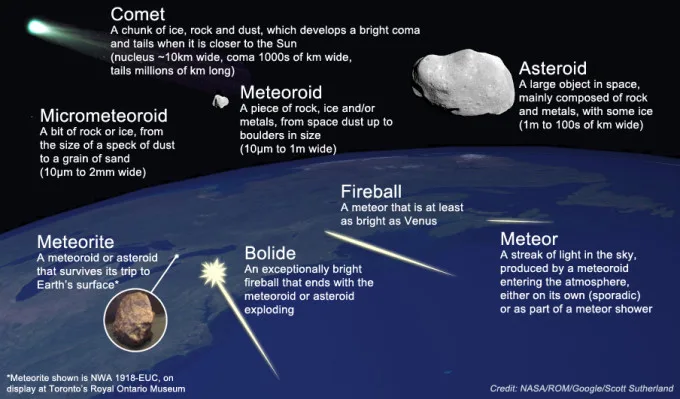
Possible fireball lights up Alberta sky: See it here
'Shooting stars' are typically more of a nighttime phenomenon, but a bright flash in the sky over Alberta on Saturday might have been an unusual daytime meteor sighting.
The trail of light was captured on film by several viewers in the province, including Tim Wiebe, who found his doorbell camera spotted the streak.
According to the American Meteor Society (AMS) website, 20 people in Alberta reported seeing the potential fireball just after 5 p.m. MST on Saturday. Most of those who registered their sightings were in the Calgary area and said the apparent meteorite was visible for between 1.5 and 3.5 seconds in the twilight sky. The Sun sets around 5:40 p.m., local time, in Calgary at this time of year.
RELATED: Think you've found a meteorite? Here's how to know for sure
METEOR, METEORITE, FIREBALL - WHAT'S THE DIFFERENCE?
Social media lit up with Albertans asking if others had seen the fireball, asteroid, or meteor on Saturday evening, which leads us to the question -- what's the difference?
The bright light itself is the meteor, and it's caused by a meteoroid entering Earth's atmosphere. That meteoroid gets dubbed a meteorite if it (or pieces of it) makes it to the surface. An asteroid is a larger, spacefaring object made of rock or metal.
Fireball is the name given to a meteor that is at least as bright as Venus in our sky.

A primer on meteoroids, meteors and meteorites. Credits: Scott Sutherland/NASA JPL (Asteroids Ida & Dactyl)/NASA Earth Observatory (Blue Marble)
"Every day, several tonnes of dust, ice and rock are swept up by Earth's atmosphere as the planet moves through space," says The Weather Network's science writer Scott Sutherland. "Much of this is just tiny grains of dust and ice. A small portion of it is slightly larger bits, like grains of sand, pebbles and gravel - the larger the size, the fewer there are.
"Once in a while, maybe a few times a month, something bigger gets in our way as Earth flies around the Sun. These larger meteoroids vary in size, anything from the size of a golf ball, up to giant asteroids that are multiple metres across. The Chelyabinsk asteroid, from February 2013, was probably around 20 metres across!"
Sources: AMS | Scott Sutherland/TWN | CBC News |









